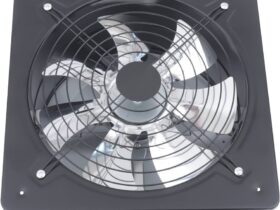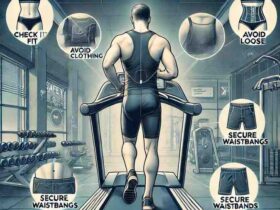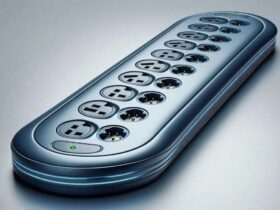Understanding the Basics of Non-Surge Protector Power Strips:
Power strips are a staple in both home and office environments, providing additional outlets to accommodate various electronic devices. While surge protector power strips are well-known for their ability to shield electronics from voltage spikes, non-surge protector power strips serve a different, yet equally important purpose. This guide will delve into what non-surge protector power strips are, their uses, and how to choose the right one for your needs.
Definition and Core Functionality of Non-Surge Protector Power Strips:
Understanding the essential characteristics and distinct functionalities of non-surge protector power strips is fundamental for effectively utilizing these devices in various environments. This detailed exploration delves into what non-surge protector power strips are, how they operate, and the ways they differ from surge-protected counterparts.
What is a Non-Surge Protector Power Strip?
A non-surge protector power strip, often referred to simply as a power strip, allows multiple devices to be powered from one outlet. It typically includes a row of electrical sockets encased in rigid plastic or metal, connected by a single power cable. Unlike surge protectors, these power strips lack mechanisms to shield devices from voltage spikes or surges.
The primary role of a non-surge protector power strip is to expand available electrical outlets, making it useful in offices, workshops, and homes. These devices are especially valuable in areas with limited outlets but low risk of electrical surges. By providing additional outlets, they help manage power distribution efficiently and reduce the need for unsafe daisy chaining.
Non-surge protector power strips are preferred for their simplicity and affordability. They are less costly than surge protectors because they do not include complex circuitry for surge protection. This makes them an economical option for daily use where protecting against electrical surges is not the primary concern but having multiple plug points is.
How Does it Differ from Surge Protectors?
While both non-surge protector power strips and surge protectors aim to provide multiple outlets, they differ significantly in protecting against voltage fluctuations. Surge protectors have internal components like metal oxide varistors (MOVs) or gas discharge tubes, which absorb or redirect excess voltage. These components protect connected devices from potential damage caused by sudden electrical spikes.
In contrast, non-surge protector power strips do not offer this protection layer. They focus solely on distributing power from one outlet to several devices without additional safety features. This lack of surge protection makes them unsuitable for high-value electronics or sensitive devices such as computers, televisions, and audio equipment.
Choosing between a surge protector and a non-surge protector power strip depends on the specific needs of the environment and the devices to be connected. For instance, a non-surge protector power strip is suitable for powering lamps, small kitchen appliances, or chargers in areas with stable electrical conditions. However, for electronics that process large amounts of data or are costly to repair, a surge protector is advised.
In summary, non-surge protector power strips are practical and cost-effective for expanding outlet capacity in low-risk environments. They provide essential power distribution functionality without the complexities and costs associated with surge protection. Understanding these differences is crucial for making informed decisions about managing power needs safely and appropriately in any setting.


Here is the image of a non-surge protector power strip as requested. It features the power strip on a wooden desk with various electronic devices plugged into it, showcasing its use in a typical home office environment.
Common Uses in Homes and Offices for Non-Surge Protector Power Strips:
Non-surge protector power strips are essential in many residential and commercial settings, providing a simple yet effective solution for powering multiple devices from a single source. This section explores the ideal environments and typical devices suited for non-surge protector power strips, emphasizing their practicality in everyday use.
Ideal Environments for Non-Surge Power Strips
Non-surge protector power strips are ideally suited for environments where the risk of power surges is minimal, and the need for additional outlets is a priority. These environments typically boast stable, reliable electrical infrastructure with rare fluctuations in voltage. Such conditions are commonly found in:
- Residential Areas: Homes generally do not experience frequent electrical surges, making non-surge power strips a viable option for rooms like bedrooms and kitchens.
- Commercial Offices: In office environments, particularly in modern buildings with updated electrical systems, the risk of surges tends to be low. Non-surge strips are often utilized here to connect non-critical devices such as desk lamps and small appliances.
- Educational Institutions: Classrooms and libraries frequently use non-surge power strips to power computers, projectors, and other educational tools, assuming the electrical system is stable.
Selecting the appropriate environment for using a non-surge protector power strip involves assessing the electrical stability of the area and the sensitivity of the devices to be connected. It is crucial to ensure that the chosen area is not prone to electrical issues that could pose a risk to connected devices.
Typical Devices Powered by Non-Surge Strips
Non-surge protector power strips are appropriate for powering a variety of devices that are either low in cost or insensitive to voltage spikes. These devices typically include:
- Home Appliances: Items such as table lamps, stand fans, and kitchen appliances, which do not contain delicate electronic circuits, can be safely powered by non-surge strips.
- Office Equipment: Non-sensitive office devices, including shredders, printers, and desktop fans, are ideal candidates for non-surge power strips.
- Audio and Visual Equipment in Low-Risk Areas: In areas with proven electrical stability, non-surge power strips can be used to connect audio systems and monitors, although caution is advised since these devices can be sensitive to surges.
While non-surge power strips are convenient and widely useful, it is important to recognize that they do not provide protection against unexpected voltage increases. Devices that store significant data or are expensive to repair, such as computers and high-end entertainment systems, should ideally be connected to surge-protected power strips.
In summary, non-surge protector power strips are an excellent choice for various everyday applications in both homes and offices. They prove especially valuable in environments with stable electricity, where the primary need is to extend the number of available outlets. Understanding the limitations and appropriate uses of these power strips is crucial for ensuring their safe and effective use. By carefully selecting the right devices and environments for their use, individuals can fully utilize these practical tools without compromising the safety of their electronic devices.
Key Advantages of Non-Surge Protector Power Strip:
Cost-Effectiveness of Non-Surge Protector Power Strips:
Non-surge protector power strips are renowned for their affordability compared to surge-protected variants. This section explores their cost advantages, both immediate and over time, providing a deeper understanding of why these devices are an economical choice for many users.
Comparing the Price Points with Surge Protectors
Initially, non-surge protector power strips are generally less expensive than their surge-protected counterparts. This price difference is primarily due to the simpler design of non-surge strips, which lack the complex surge protection components. For instance, while a basic non-surge power strip might cost as little as $5 to $10, a surge protector could start at $15 and go upwards, depending on additional features like USB ports or advanced circuitry.
Consequently, for budget-conscious consumers or settings where multiple outlets are needed without surge protection, non-surge power strips offer a more accessible entry point. They are ideal for low-risk environments where the threat of electrical surges is minimal, such as in areas with stable, reliable power grids. Thus, the upfront savings can be significant, especially when outfitting an entire home or office.
Furthermore, in situations where the primary requirement is to multiply outlet capacity rather than protect against voltage spikes, opting for non-surge power strips makes practical and financial sense. By choosing these, individuals and businesses can allocate resources to other needs, enhancing overall economic efficiency.
Analyzing the Long-Term Savings
Over the long term, the savings afforded by non-surge protector power strips can accumulate to a considerable amount. Although they do not provide surge protection, in environments where this is not a critical concern, their lower cost per unit becomes an important factor in budget planning.
Additionally, the simplicity of non-surge power strips often translates to fewer maintenance issues and longer life spans under normal usage conditions. Without the need to replace failed surge protection components, which can wear out over time, non-surge power strips tend to remain functional and reliable for many years. This durability further enhances their cost-effectiveness, reducing the frequency of replacement and the associated expenses.
Moreover, for facilities that require a large number of power outlets, such as schools, administrative buildings, and certain commercial spaces, the cost savings from choosing non-surge power strips can be substantial. The cumulative cost of purchasing multiple units can be significantly lower, enabling more comprehensive coverage throughout the facility without straining the budget.
In conclusion, non-surge protector power strips offer a practical and economical solution for extending electrical outlet access in various settings. By understanding their price advantages and the contexts in which they are most beneficial, users can make informed decisions that balance cost, convenience, and safety. Ultimately, the judicious use of non-surge power strips can contribute significantly to managing expenses while meeting operational needs effectively.

An informative poster illustrating the key features and benefits of non-surge protector power strips.
Simplicity in Design and Use of Non-Surge Protector Power Strips:
Non-surge protector power strips are celebrated for their straightforward design and ease of use. This section delves into the inherent simplicity of these devices and explains why this minimalism is advantageous in various settings.
Ease of Use Without Complicated Features
Non-surge protector power strips boast a user-friendly design, free from complex features that characterize surge protectors. These strips typically include just the essentials: multiple outlets and a power switch. Consequently, users can operate them effortlessly without needing to understand technical details.
This simplicity is particularly beneficial in fast-paced environments where quick setup and immediate use are necessary. For example, during events or conferences, setting up non-surge strips is quick and straightforward, facilitating seamless power supply to multiple devices.
Additionally, the lack of complicated features minimizes the potential for operational errors. Users are less likely to misuse or incorrectly configure a non-surge power strip, ensuring that devices are powered safely and reliably.
Why Simplicity Benefits Certain Users and Settings
The straightforward nature of non-surge protector power strips makes them ideal for various users and environments. In educational settings, for instance, where both students and staff may need to connect devices quickly, the simplicity of non-surge strips ensures accessibility for all.
Furthermore, in residential spaces, non-surge strips meet the basic needs of most households. They provide sufficient outlets for common household appliances and electronics without the additional cost and complexity of surge protection.
Moreover, simplicity translates to cost-effectiveness. Without the need for advanced protective features, non-surge strips are less expensive to manufacture and purchase. This makes them a financially accessible option for budget-conscious consumers and large-scale deployments in institutions.
The design also promotes durability. With fewer components that can fail, non-surge power strips typically have a longer lifespan than their surge-protected counterparts. This long-term reliability is beneficial in settings where frequent replacement of equipment is impractical.
In conclusion, the simplicity in design and use of non-surge protector power strips is a significant advantage. It aligns well with the needs of users who require basic power extension without the intricacies of surge protection. By opting for these straightforward devices, users can enjoy an uncomplicated and effective solution for their power needs, ensuring safety and accessibility across various applications.
Choosing the Right Non-Surge Protector Power Strip:
What to Look For in a Power Strip:
When selecting a non-surge protector power strip, there are several key factors to consider. This section outlines essential criteria to guide your purchase, ensuring you choose a power strip that meets your needs efficiently and safely.
Number of Outlets and Spacing Considerations
The number of outlets on a non-surge protector power strip is a crucial factor. Typically, these range from three to twelve outlets. Consequently, it’s important to anticipate the number of devices you plan to connect.
Additionally, consider the spacing between the outlets. Some devices have larger plugs, which may block adjacent outlets if the spacing is too narrow. Therefore, look for a power strip with adequately spaced outlets to accommodate all your devices.
Moreover, some power strips feature rotating outlets that enhance flexibility, allowing you to position large plugs more conveniently. This feature can be particularly useful in office settings or entertainment centers, where space optimization is critical.
Furthermore, assess the layout of the outlets. Some strips offer a mix of standard and spaced outlets, catering to a variety of plug sizes and shapes. This design ensures that all outlets are usable, maximizing the strip’s effectiveness.
Cord Length and Material Quality
The length of the power strip’s cord is another important consideration. Choose a length that allows you to easily reach your nearest power outlet without stretching or adding extension cords, which can be a safety hazard.
Additionally, the quality of the cord material is vital for safety and durability. Look for power strips with thick, durable cords that can withstand wear and tear. A good-quality cord also reduces the risk of fire, a critical aspect to consider.
Moreover, ensure the cord is flexible enough to route around furniture or corners without kinking or damaging the wire. This flexibility helps maintain a tidy and safe setup, especially in high-traffic areas.
Furthermore, check if the power strip includes a cord management system to help keep excess cord neatly stored. This feature not only enhances safety by reducing tripping hazards but also contributes to a cleaner, more organized space.
In conclusion, when choosing a non-surge protector power strip, it’s essential to consider both the number and arrangement of outlets as well as the quality and length of the cord. By carefully selecting a power strip that meets these criteria, you can ensure it effectively meets your power needs while maintaining safety and convenience. This mindful approach will allow you to make the most of your non-surge protector power strip in any setting.

An educational info graphic highlighting safety tips for using non-surge protector power strips.
Safety Features Despite Lack of Surge Protection:
Even without surge protection, non-surge protector power strips can incorporate significant safety features. This section explores the vital roles of built-in circuit breakers and UL certification, underscoring how these elements enhance the safety of using non-surge protector power strips.
Built-in Circuit Breakers and Their Importance
Built-in circuit breakers are a critical safety feature in non-surge protector power strips. They prevent the risk of overloading the power strip by cutting off the power if the current flowing through becomes too high. Consequently, they protect both the power strip and connected devices from potential damage.
Circuit breakers serve as an essential safeguard, particularly in settings where multiple devices are powered simultaneously. They help ensure that the power strip operates within safe electrical limits. Moreover, these circuit breakers can be quickly reset, allowing for easy restoration of power once the overload issue is resolved.
Additionally, the presence of a circuit breaker in a non-surge protector power strip provides a level of user confidence. It reassures that basic safety measures are in place, even though the device lacks surge protection capabilities. This feature is particularly valuable in environments where electrical demands are high but surge protection is not a primary concern.
Furthermore, circuit breakers help to extend the lifespan of both the power strip and the connected devices. By preventing electrical overload, they reduce the wear and tear on the power strip and help maintain the overall health of the electronic devices connected to it.
UL Certification and What It Means for Users
UL certification stands as a hallmark of safety for electrical devices, including non-surge protector power strips. UL (Underwriters Laboratories) is a globally recognized safety science company that sets rigorous standards for product safety. Therefore, a UL-certified non-surge protector power strip has been tested to meet high safety standards.
This certification is important because it provides users with assurance that the power strip is reliable and safe for everyday use. UL-certified power strips are evaluated for fire safety, electrical reliability, and overall build quality. Thus, users can trust that these products are less likely to cause electrical accidents.
Moreover, UL certification often influences consumer choice, as many users look for this mark when purchasing electrical devices. It signals that the product has passed safety tests that many uncertified products have not undergone. Consequently, choosing a UL-certified power strip can be a decisive factor in ensuring safety and reliability.
Additionally, UL certification can impact the warranty and insurance claims related to electrical devices. Products without this certification may not be covered under certain warranties or insurance policies, adding an extra layer of financial security for the user.
In conclusion, although non-surge protector power strips do not protect against voltage spikes, they can still incorporate substantial safety features like built-in circuit breakers and UL certification. These features are crucial for preventing electrical overload and ensuring the power strip meets safety standards. By understanding and valuing these safety aspects, users can confidently use non-surge protector power strips in their daily setups, knowing they have reliable measures in place to prevent common electrical issues.
Installation Tips and Safety Guidelines:
Proper Installation for Optimal Safety:
Proper installation of non-surge protector power strips is crucial to ensure safety and functionality. This section provides a detailed guide on how to correctly set up your power strip and advises on the best practices for its placement, emphasizing the importance of careful installation to avoid potential hazards.
Step-by-step Guide to Setting up Your Power Strip
- Choose the Right Location: Identify a suitable location close to the devices you need to power. Ensure it’s easily accessible and near a wall outlet.
- Inspect the Power Strip: Before using, visually inspect the power strip for any damage, such as frayed wires or loose connections.
- Avoid Moisture: Place the power strip in a dry area to prevent electrical hazards. Avoid bathrooms, kitchens, or other damp areas.
- Connect to Wall Outlet: Plug the power strip directly into a grounded wall outlet. Do not connect it to another power strip.
- Arrange Connected Devices: Connect your devices starting with those that have larger plugs or adapters to ensure they do not block other outlets.
- Secure the Power Strip: If possible, mount the power strip to a wall or desk to prevent it from moving around, which can loosen connections.
- Test the Setup: Once everything is connected, turn on the power strip using its on/off switch to ensure all devices are powered properly.
- Check for Overloading: Monitor the power strip regularly to make sure it’s not overloaded, which can be a fire risk.
Following these steps helps establish a safe and effective power supply setup, reducing the risk of accidents and ensuring that your devices operate reliably.
Best Practices for Placement to Avoid Hazards
- Keep Away from High Traffic Areas: Place the power strip where it will not be a tripping hazard or be subject to physical damage.
- Maintain Air Circulation: Avoid covering the power strip with fabrics or other materials that can restrict airflow and lead to overheating.
- Elevate Above Floor Level: If possible, place the power strip above floor level to avoid dust accumulation and exposure to potential spills.
- Distance from Heat Sources: Keep power strips away from heat sources like radiators, heaters, and direct sunlight to prevent overheating.
- Use Properly Rated Equipment: Ensure that all devices connected to the power strip do not exceed its electrical rating. This prevents overheating and electrical fires.
- Regular Maintenance: Periodically check the power strip for any signs of wear or damage. Replace it if it shows any signs of deterioration.
- Avoid Daisy-Chaining: Never plug one power strip into another, as this can easily lead to overloading and electrical fires.
Implementing these best practices will greatly enhance the safety of using non-surge protector power strips in any setting. By carefully considering the placement and maintenance of your power strip, you can prevent accidents and ensure a safe environment for all your power needs.
Maintaining Your Non-Surge Protector Power Strip:
Proper maintenance of non-surge protector power strips is crucial for ensuring safety and longevity. This section outlines practical steps for routine checks and provides recommendations for when to consider replacing your power strip.
Routine Checks for Damage or Malfunction
- Visual Inspection: Regularly examine your power strip for any visible signs of damage, such as cracks, loose components, or burn marks.
- Check for Functionality: Test all outlets to ensure they are functioning properly. Non-working outlets could indicate internal damage.
- Assess the Power Cord: Look for fraying, cuts, or kinks in the cord, which could compromise the safety of the power strip.
- Feel for Heat: During use, touch the power strip to check for excessive heat, which could signal an electrical problem.
- Smell for Burning: Notice any unusual odors, like burning plastic, which could indicate serious electrical issues that need immediate attention.
- Listen for Buzzing Sounds: Be alert to any buzzing or crackling noises coming from the power strip, as these could indicate faulty wiring.
- Ensure Proper Fit: Make sure that all plugs fit securely into the outlets, as loose connections can lead to arcing and overheating.
Conducting these routine checks can help identify potential issues early, preventing damage to connected devices and reducing the risk of fire hazards.
Recommendations for Replacement Intervals
- Follow Manufacturer’s Guidelines: Refer to the user manual or manufacturer’s recommendations for specific advice on replacement intervals.
- Consider Usage Conditions: Replace power strips more frequently if they are used in high-demand or harsh environments, such as workshops or outdoor settings.
- Look for Technological Upgrades: Consider replacing older power strips with newer models that have enhanced safety features, such as improved circuit breakers or better materials.
- Set a Routine Schedule: As a general rule, consider replacing your power strip every three to five years to ensure it remains in good working condition.
- After Any Significant Surge: If a power strip has experienced a significant surge or has stopped functioning after an overload, replace it immediately to ensure safety.
- Observe Changes in Device Performance: If devices connected to the power strip start malfunctioning or resetting unexpectedly, the power strip might be failing.
By adhering to these recommendations, you can maintain the safety and effectiveness of your non-surge protector power strip, ensuring it continues to provide reliable service without compromising the safety of your electronic devices. Regular maintenance and timely replacement of power strips are key practices that contribute significantly to creating a safe and functional electronic environment.

Illustration of a variety of non surge protector power strips on a work desk featuring multiple outlets and cords.
FAQs: Non-Surge Protector Power Strip
What is a non-surge protector power strip?
A non-surge protector power strip is a device that expands one electrical outlet into multiple outlets. It does not provide surge protection.
How does a non-surge protector power strip differ from a surge protector?
Unlike a surge protector, a non-surge protector power strip does not shield connected devices from voltage spikes or surges.
Where should I use a non-surge protector power strip?
Use it in environments with stable, low-surge risk electricity, such as in residential or administrative settings.
What should I not connect to a non-surge protector power strip?
Avoid connecting sensitive electronics, like computers and TVs, which require protection from electrical surges.
Can I use a non-surge protector power strip outdoors?
It is not recommended, especially if not specifically designed for outdoor use, due to safety risks.
How many devices can I plug into a non-surge protector power strip?
Do not exceed the strip’s power capacity; check the manufacturer’s specifications to ensure safety.
Is it safe to plug a refrigerator into a non-surge protector power strip?
Generally, large appliances like refrigerators should be plugged directly into wall outlets to avoid overloading the strip.
How do I know if my non-surge protector power strip is overloaded?
Signs of overload include the strip feeling hot, devices malfunctioning, or the circuit breaker tripping.
What maintenance does a non-surge protector power strip require?
Regularly inspect for damage, ensure it’s not overloaded, and replace it every few years or if damaged.
How often should I replace my non-surge protector power strip?
Replace it every three to five years, sooner if it shows any signs of wear or damage.
Can I daisy-chain multiple non-surge protector power strips?
Daisy-chaining power strips is unsafe and not recommended as it increases the risk of overloading and fire.
What features should I look for in a high-quality non-surge protector power strip?
Look for sturdy construction, ample outlet spacing, and features like circuit breakers for safety.
Why is it important to check the cord length when purchasing a power strip?
Adequate cord length ensures easy placement without the need for unsafe extensions or alterations.
Are there any legal considerations for using non-surge protector power strips in commercial settings?
Yes, ensure compliance with local safety codes and insurance policies, which may require specific types or features.
How can I safely dispose of an old non-surge protector power strip?
Recycle it through electronics recycling programs, or check with local waste management for disposal guidelines.
By keeping these FAQs in mind, users can effectively select, use, and maintain non-surge protector power strips, ensuring safety and efficiency in their electrical setups.
Conclusion: Making an Informed Choice
Choosing the right type of power strip—whether a surge protector or a non-surge protector—depends greatly on your specific needs. Consider the electrical environment in your area before making a decision. For low-risk applications and powering devices that are less sensitive to surges, non-surge protector power strips are both practical and cost-effective.
Always prioritize safety and quality when selecting a power strip. Ensure the product you choose is robust and reliable to secure your devices effectively. High-quality non-surge protector power strips can provide the necessary functionality without the added cost of surge protection.
In environments with stable electricity and minimal risk of voltage spikes, non-surge protector power strips can serve well. They are ideal for powering everyday appliances and electronics that do not require surge protection.
However, for electronics that are sensitive or expensive, opting for a surge protector is advisable. It provides an added layer of security against unpredictable electrical surges that can cause damage.
Ultimately, understanding the distinctions between these two types of power strips will help you make a well-informed decision. This ensures that your electronic devices are safely powered in accordance with the demands of your environment.











Leave a Review